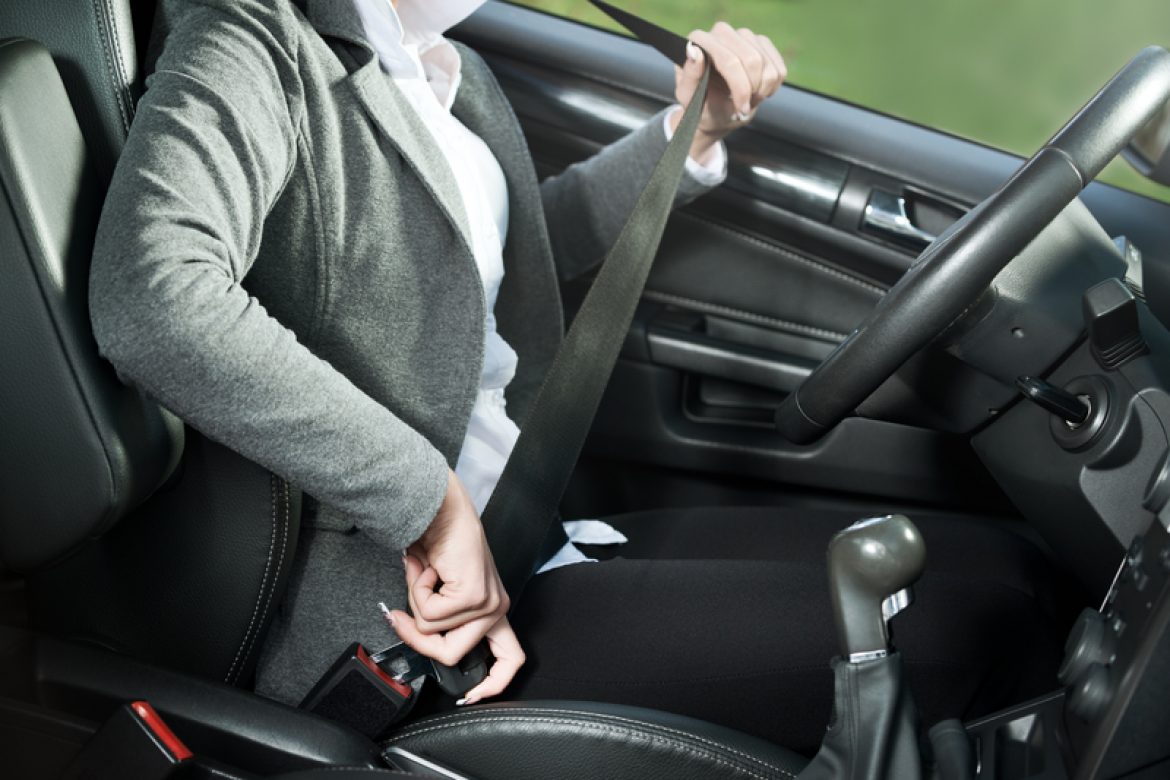Want to Get More Seriously Injured in a Car Accident? Then Don’t Wear Your Seatbelt

You know you should wear a seat belt at all times. And maybe you do when driving at fast speeds or during long car rides. But it’s so easy to forget when running a quick errand or two at lower speeds. After all, the airbag will protect you or you’ll just brace yourself if you’re in a lower speed crash. Right?
Wrong. Without a seat belt, your chance of dying in a car accident actually increases by 86%. That includes even lower speed crashes. But how does this happen? Let’s review how objects stop in a collision. Note that the following three actions all happen in less than a second.
- First, the vehicle stops. The car will hit something—another vehicle, a wall, or another obstacle—and come to an abrupt stop.
- Second, you stop. Just because the car stops doesn’t mean you stop. You are a separate object from the car, and you are going the speed of the car. As the car crashes to a stop, you are still moving forward at 25, 35, 55, 75, or however many miles an hour the car was going—until you hit something.
- Third, your organs stop. It’s strange to think about but your organs are free floating objects in your body surrounded by blood and plasma. Even after your body stops, your organs will still be moving at 25, 35, 55, 75, or however many miles an hour the car was going until they hit against the inside of your body.
Now, imagine falling three stories out of a window. You’d feel fine, right?
Wait, you wouldn’t? That’s right. It’s even scary to think about. Now, realize that that’s what it would feel like if your car collided with something at only 30 miles per hour—a low speed when you’re most tempted not to wear a seat belt. Try bracing yourself when falling three stories out of a window or imagining a tiny airbag going off in your face when you hit the ground.
So, when your vehicle stops, your body keeps moving. Where does your body go when you don’t wear a seat belt?
- Your body can hit the windshield. Colliding with a windshield at high speeds increases the risk of a brain, neck, and spinal injury.
- Your body can bang around the inside your vehicle. This often happens when your car spins and flips, and so you’re flung against the roof, doors, and floor. All kinds of injuries can occur ranging from broken bones to severe brain or spinal cord injuries.
- Your body can get ejected from the vehicle. Sadly, this happens in many accidents when people don’t wear seat belts, especially at high speeds. If you’re just injured after an ejection, you’re lucky. That’s because in many cases you will die or become permanently disabled.
A seatbelt eliminates the majority of these risks by:
- Slowing down the rate that you come to a stop. A seat belt essentially puts the “brakes” on your body when the car crashes.
- Spreading out the force of the abrupt stop across your body. A seat belt spreads out the force of the collision to your shoulders, chest, and hips—the strongest bones in your body that can most absorb force.
- Preventing you from hitting any objects. That includes the windshield, the inside of the car, or an object outside of the car if you’re ejected.
Finally, let’s look at the two most common excuses that people make if they don’t want to wear their seatbelt.
Myth: “The airbag will protect me.”
Reality: Airbags are actually designed to work with seat belts—not by themselves. Remember, the force of the collision is too strong for an airbag alone to protect you. The airbag is supposed to make sure that you don’t hit the steering wheel, dashboard, or windshield with your face—which can happen even while wearing a seat belt. An airbag is not designed to withstand the full force of your body hitting it.
Myth: “I’ve heard that people get trapped when wearing seat belts and can’t escape their car.”
Reality: These kinds of cases are ridiculously rare. Seat belts will protect you from death, paralysis, and major injuries in most car accidents. That’s enough of a reason to always wear them. However, in rare accidents when you’re trapped in the car, the force of a collision when not wearing a seat belt will most likely knock you unconscious. So even if you’re “free” to move, you won’t wake up for some time anyway. And even if you’re trapped and still conscious, emergency personnel are equipped to quickly extract people out of cars. Not wearing a seat belt because of the extremely rare incident where you might get trapped in a car in an isolated location with no one around is silly and recklessly endangers your life.
—
The bottom line? Evidence shows that wearing your seat belt will save your life, prevent major injuries, and protect your body in any accident—low or high speed. If you consider this evidence as gambling odds, then the seat belt is easily the best bet.
Injured in an accident? Call us today for a free consultation.
